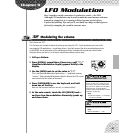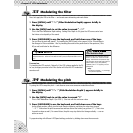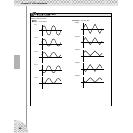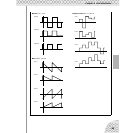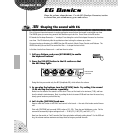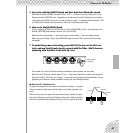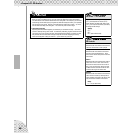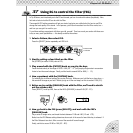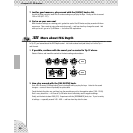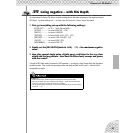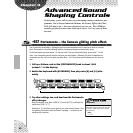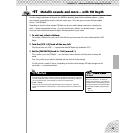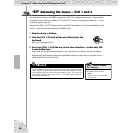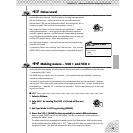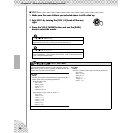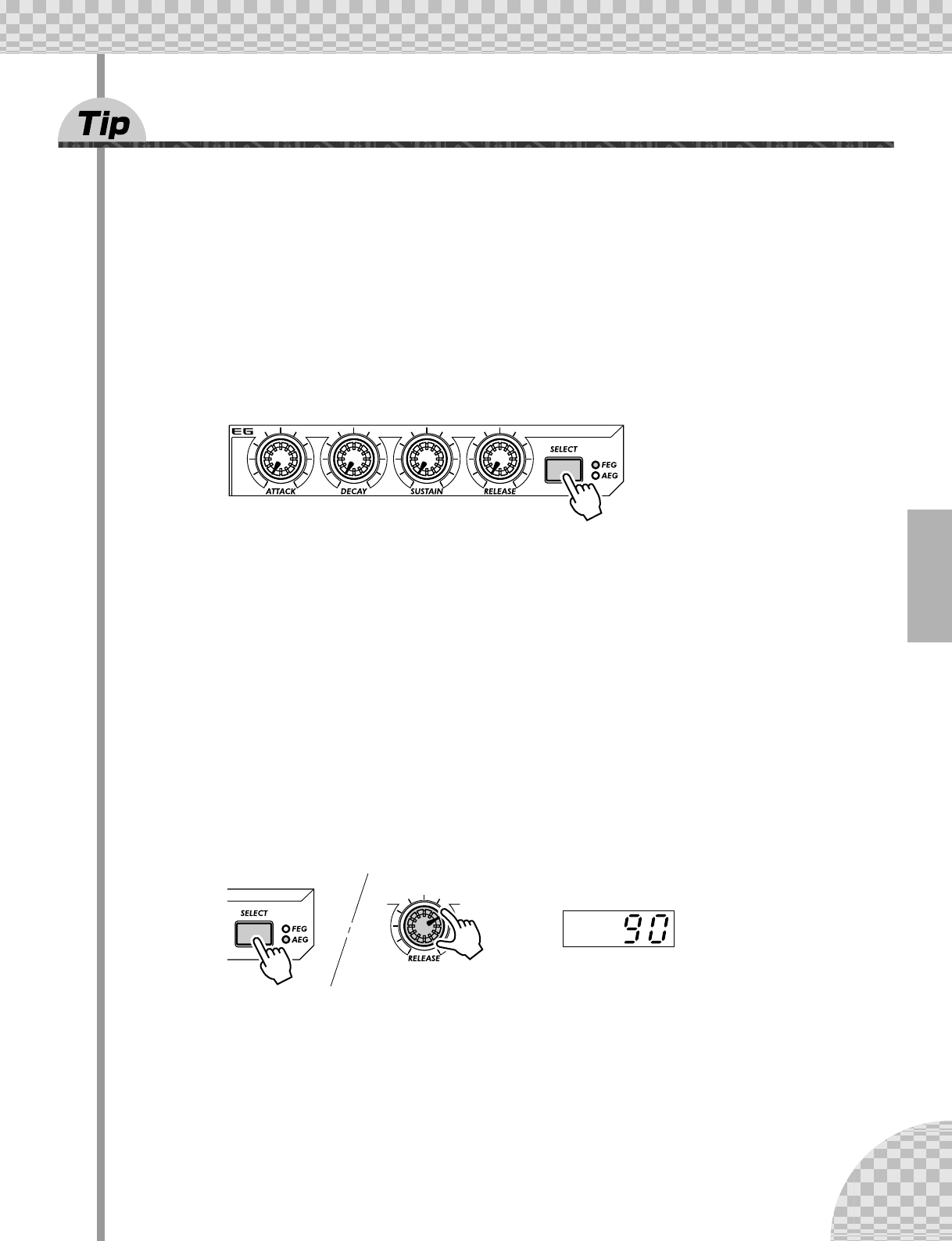
49
Chapter 10 EG Basics
37 Using EG to control the Filter (FEG)
In Tip 36 above, we introduced you to the EG and showed you how it works with volume (Amplitude). Now,
let’s take a look at what the EG can do with the Filter.
These specific FEG setting examples will get you started, and give you a definite feel for how to use EG to
change the tonal quality of the sound. In the process, you’ll learn more about how the Filter works, too —
and how you can get it to work for you.
Try out these settings, experiment with them, go wild, go mad! There’s so much you can do with these con-
trols, so many sonic possibilities — this barely scratches the surface.
1 Select a Pattern, then select FEG.
Press the [SELECT] button repeatedly until FEG is lit.
2 Start by setting a slow Attack on the Filter.
Set [ATTACK] to around 12:00 (value of 65).
3 Play around with the [CUTOFF] knob as you play the keys.
Tweak the knob slowly in the range of 10:00 - 5:00 (30 - 127) as you play single notes in succession.
Listen to how the sound changes. Finally, set the knob to around 8:00 or 9:00 (1 - 15).
4 Now, experiment with the [SUSTAIN] knob.
Try tweaking this to different settings as you play the keys. Make sure you hold the key or keys down —
the sound will change as you hold. Before you go on to the next steps, set this to around 11:00 (50).
5 Before we try out the [RELEASE] knob with the Filter, we’ll need to stretch
out the volume a bit.
Press [SELECT] to call up AEG, then set the AEG’s [RELEASE] to about 2:00 (90 - 95).
6 Now, go back to the FEG (press [SELECT]), and work with the FEG’s
[RELEASE] knob.
Play a series of single notes, and tweak the knob between 11:00 and 4:00 (45 and 120).
Notice how the FEG Release setting determines how much of the sound is heard after key is released. If
the Filter Release is too short, little or none of the sound will come through.
Finally, set this to around 12:00 or 1:00 (65 - 80).
Indicates FEG
is selected.



